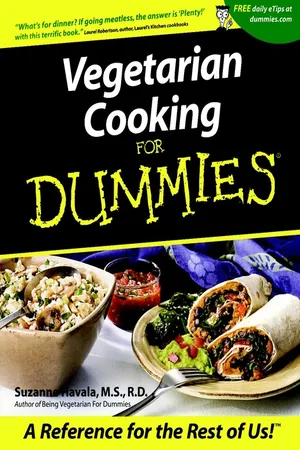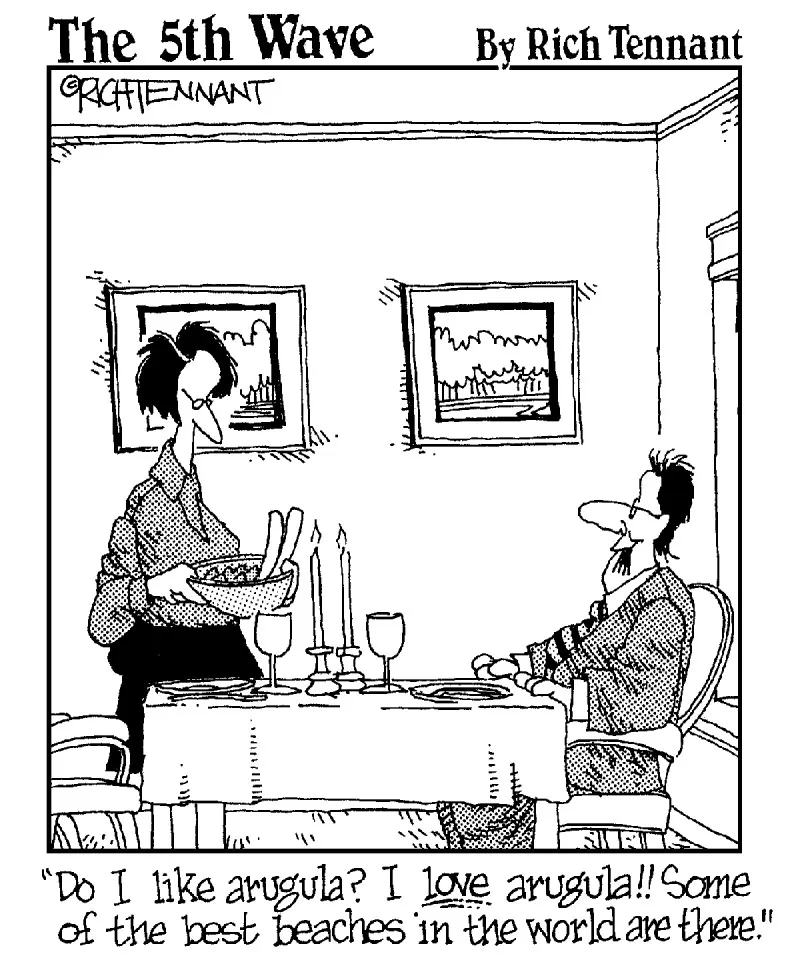
- English
- ePUB (mobile friendly)
- Available on iOS & Android
Vegetarian Cooking For Dummies
About This Book
If you thought you had to be a nutritionist to figure out a vegetarian diet, it's actually a lot simpler than you think. Eating vegetarian, in addition to being healthy and delicious, is just plain fun. Discovering new and exotic vegetables like celeriac or kohlrabi will widen your palate as well as your sense of adventure in the kitchen. Plus, vegetarian cuisine is chockfull of dishes that are robust and flavorful, and a match for any standard meat dish. And, most important of all, eating a plateful of vegetarian lasagna or pasta primavera, or any other scrumptious dish prepared vegetarian style will let you indulge—without guilt!
With Vegetarian Cooking For Dummies, you'll get the skinny on just what lacto-ovo, lacto, and just plain vegan diets are all about and how to create nutritious meals from the rich cornucopia of whole grains, legumes, vegetables, fruits, nuts and seeds, and dairy and egg substitutes that are the staple of the vegetarian menu. You'll also find out:
- How to get your full complement of protein and vitamins, including calcium, iron, C, B12, and zinc—and from what, often surprising, food sources
- How to successfully convert to a vegetarian diet
- How to stock up a vegetarian pantry—including tips on where to shop, starting a kitchen garden, as well as handy weekly and monthly food lists
- Vegetarian cooking basics—including preparing ingredients, cooking beans and grains, handling tofu and tempeh, washing and cutting fruits and vegetables
- Simple cooking techniques—including baking, boiling, steaming, sautéing, and stewing
- The ins and outs of vegetarian etiquette
Not only will you become fully acquainted with the new and delicious world of meat replacements (like tofu, tempeh, seitan, textured vegetable protein, veggie burgers and franks) and egg, dairy, yogurt and cheese substitutes, you'll see how truly simple and enjoyable cooking vegetarian can be. With over delicious 100 recipes, you'll find yourself choosing among such soon-to-be favorites as:
- Smoothie snacks—including a Caramel Apple Smoothie and a Winter Berry Smooth
- Breakfast dishes—including Savory Mushroom Tofu Quiche, Healthy Pancakes, and French Toasties
- Delicious dips—including Hummus, Baba Ghanouj, and Fresh Avocado and Lime Dip
- Soups for all seasons—including Vegetarian Chili with Cashews and Southern Sweet Onion Soup
- Scrumptious salads—including Festive Broccoli Salad, Tofu Salad, and Lentil Vinaigrette Salad
- Entrees for everyone—including Basic Bean Burritos, Spinach and Mushroom Manicotti, Garden Pizza, and Tempeh Sloppy Joes
Full of tips on adapting traditional recipes to vegetarian style cooking, plus a spicy spin on old standbys like Home Fries, Vegetarian Cooking For Dummies lets you reinvent the vegetarian lifestyle to suit your needs and tastes. With pages of full-color photos, black-and-white how-to illustrations, and humorous cartoons along the way, this fun, informative, and upbeat guide makes every meal an exciting step in the journey toward lifelong health.
Frequently asked questions
Information
Part I
A Whirlwind Guide to Vegetarian Basics

Chapter 1
What Vegetarianism Is
In This Chapter



Laboring Over Labels




Label logic




Table of contents
- Title
- Contents
- Introduction
- Part I : A Whirlwind Guide to Vegetarian Basics
- Chapter 1: What Vegetarianism Is
- Chapter 2: Nutrition Myths and Realities
- Chapter 3: Moving to Meat-Free
- Chapter 4: Planning Vegetarian Meals
- Part II : Your Vegetarian Kitchen
- Chapter 5: Common Vegetarian Ingredients
- Chapter 6: Stocking Your Vegetarian Pantry
- Part III : Tools and Techniques
- Chapter 7: Tools of the Trade
- Chapter 8: Vegetarian Cooking Basics
- Chapter 9: Adapting Recipes
- Part IV : The Recipes
- Chapter 10: Beverage Basics
- Chapter 11: Rise and Shine, It’s Breakfast Time!
- Chapter 12: Delicious Dips and Spreads
- Chapter 13: Soups for All Seasons
- Chapter 14: Simply Scrumptious Salads
- Chapter 15: Entrees for Everyone
- Chapter 16: Side Dish Spectaculars
- Chapter 17: A Bounty of Breads and Rolls
- Chapter 18: Desserts
- Chapter 19: Hooray for Holidays!
- Chapter 20: Menus Made Easy
- Part V : The Part of Tens
- Chapter 21: Ten Reasons to Cook Vegetarian
- Chapter 22: Ten Practical Vegetarian Cookbooks
- Chapter 23: Ten Helpful Web Sites to Check Out
- Chapter 24: Ten Online Sources of Ingredients
- Appendix: Metric Conversion Guide
- : Color Insert